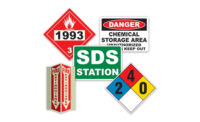
Jack knew that he was supposed to wear safety goggles before going into the drill area. But they were way behind schedule and he only needed to go in for a minute. His safety goggles were on the other side of the plant and that would delay an important customer’s order another five critical minutes.
This story is all too familiar. When all other things are equal, workers will choose a safe method over an unsafe method. But we need to understand what makes these other things sometimes “not equal.” Even when workers know they are supposed to follow safe practices, other considerations often get in the way. Safety incentive programs are intended to motivate workers to act safely. But this can only work if they counterbalance the influences that encourage use of a less safe behavior. If we don’t understand the different kinds of objectives that are competing with safety, we can’t be expected to design a safety incentive program that works. All of our safety incentive programs, awards, competitions, and prizes will be for nothing.
There are several categories of objectives that will influence a worker’s behavior and may take priority over safe behavior. If any of these conflicts with the safe behavior, the safe behavior may be sacrificed. There are:
- evaluation objectives
- supervision objectives
- effort objectives
- social objectives.
Often the most powerful influence on an employee’s behavior is the metrics that define a job well done. These metrics are communicated to the workforce through pay incentives, wage and salary raises, and promotions. They can also be received through direct feedback from the customer. Safety is often somewhere on this list, but rarely at the top. If there is a conflict between safe behavior and these other performance metrics, the safe practice may be sacrificed.
Supervision objectives
If the supervisor cares more about a metric other than safety, workers will focus on that one, at the expense of paying attention to safety. Sally worked in a machine shop. With the price of steel skyrocketing, management had sent down a clear message: cut the scrap rate or heads would roll. The guide on her table saw kept slipping and she was nervous that it would screw up her tolerances. So she moved it aside and guided the piece through by hand.
Effort objectives
It is easy to rationalize that we can skip the safe practice “just this once” to save some time or physical effort. The risk of an injury may seem remote compared to the extra effort required to lift slowly with bent knees rather than a quick twist with a bent back. Or to walk across the warehouse to go find a pair of safety glasses. Most hazards are not staring us in the face at the exact moment we are doing the job. And even when we do the job unsafely, the risk of injury is not 100 percent.
Social objectives
The effects of peer pressure often conflict with safety. In most cases, this results in only small unsafe acts. But in some worksites, it can get extreme, such as a worker trying to look tough by walking in a dangerous area without a hard hat on. Or if coworkers are not bothering to follow a safe practice, a worker may feel self-conscious about being the only one.
Designing safety incentive programs
The first step is to take a look at your own situation and examine the objectives that are conflicting with safe behavior. Look at the metrics that are being used to evaluate and supervise your employees and see if any of them conflict with the safe behaviors you are trying to promote. Measure how much more time and/or effort it takes to do each job safely. Get a sense of your workplace culture and whether peer pressure is pushing workers to engage in unsafe behaviors.
Then design your safety incentives to directly counteract these influences. Overcome conflicting performance metrics by visibly including safety metrics in your employee’s performance evaluations. If there are supervisory metrics that are conflicting with safety, create an incentive that is monitored and awarded by the supervisor. It can be as simple as praising a worker who is using a safe practice when others are not. And if it is peer pressure that is causing trouble, create a facility-wide incentive that is only awarded if everyone participates. Workers who want the incentive will pressure those who slack off to get on board.
Effort metrics are the toughest nut to crack. The best thing to do is often to redesign the job to make the safe method easier. Put stores of extra safety glasses at key locations. Or provide extra training on the importance of safe lifting. But if you want an incentive on top of this, you can repeat the supervision-based incentives. Have your supervisors watch for unsafe shortcuts and be obvious and vocal about criticizing them.
Before creating any safety incentive program, you need to understand what is causing your employees to use unsafe behaviors. If it is a lack of knowledge, then training is much more useful than an incentive program. But if there are conflicting objectives, then incentives can work. The secret is to select incentives that counteract the conflict directly.


